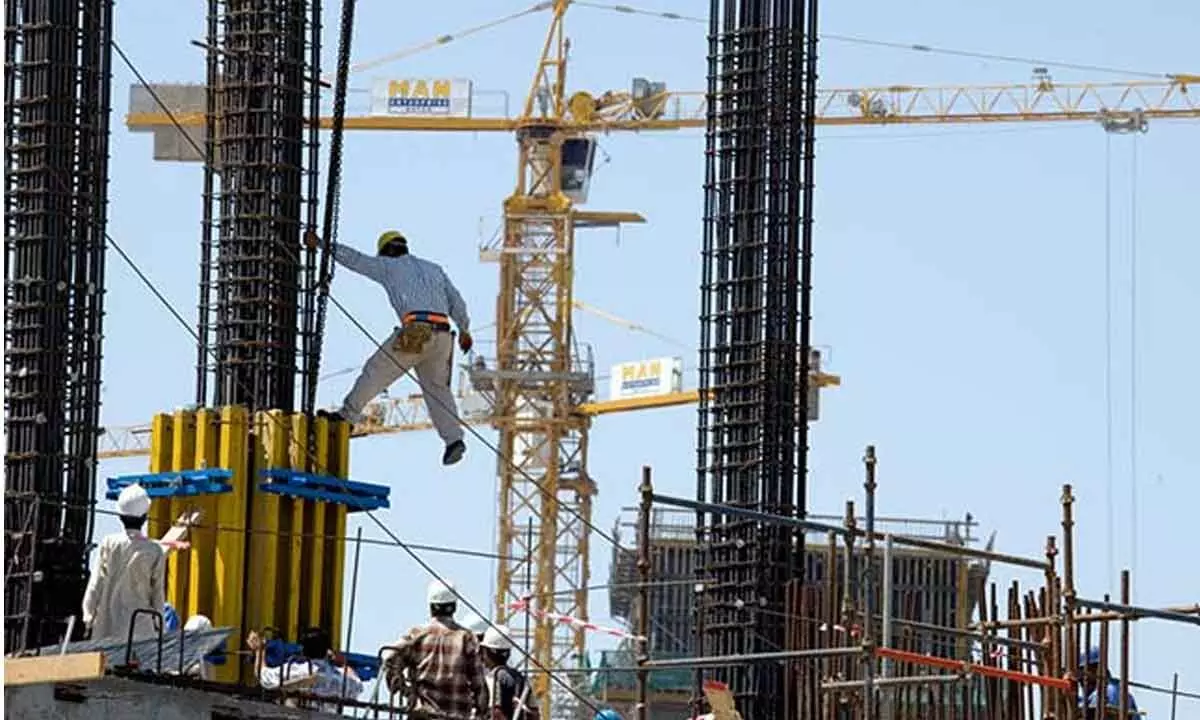Sustained capex push key to growth
Govt’s increased spending on infra such as roads and railways will be able to attract private capex which will help keep the economy’s growth back on track, says experts
image for illustrative purpose

New Delhi: With an enhanced focus on employment generation, infrastructure development and economic growth, the outlay for capital expenditure in the Union Budget has been stepped up sharply by 35.4 per cent from Rs 5.54 lakh crore in 2022-23 to Rs 7.50 lakh crore in 2023-24.
The key announcement by Union Finance Minister Nirmala Sitharaman on February 1 during her budget speech was welcomed by all including the Industry and experts. The minister said capital expenditure has thus increased to more than 2.2 times the expenditure of 2019-20 and it would be 2.9 per cent of the GDP in 2022-23. Explaining the reason behind the rise in capex, the Minister said that the virtuous cycle of investment requires public investment to crowd-in private investment.
For the private investments to rise to their potential and to the needs of the economy, public investment must continue to take the lead and pump-prime the private investment and demand in 2022-23, said the Minister. As per an estimate, each rupee of capital expenditure by the government adds nearly between Rs 2-3 to the gross domestic product (GDP) within a year or two. On the other hand, revenue expenditure, such as cash transfers, adds 90 to 99 paise to the GDP.
The rise in the capital expenditure also suggested the government's increased focus on all round infrastructure development from construction of highways and expressways, development of ports, airports and railways infrastructure. To accelerate capital expenditure for creation and upgradation of infrastructure in the economy, the government had launched the National Infrastructure Pipeline (NIP) with projected infrastructure investment of Rs 111 lakh crore during the period 2020-2025 to provide world-class infrastructure across the country, and improve the quality of life for all citizens.
The NIP was launched with 6,835 projects, which has expanded to over 9,000 projects covering 34 sub-sectors. The NIP is expected to improve project preparation, attract investments into infrastructure, and play a pivotal role in economic growth.
Similarly, Gati Shakti (National Master Plan for Infrastructure Development) has been launched as a digital platform to bring ministries and departments together for integrated planning and coordinated implementation of infrastructure connectivity projects. It will also facilitate the last mile connectivity of infrastructure and also reduce travel time for people.
Officials said that by successively increasing public capex, the spending on infrastructure such as roads and railways will be able to attract private capex which will help keep the economy's growth back on track. Moreover, the central government hopes for the wide multiplier effect of public capex which can create more jobs, as well as spur demand, which can lead businesses and industry to spend more money on capital expenditure.

